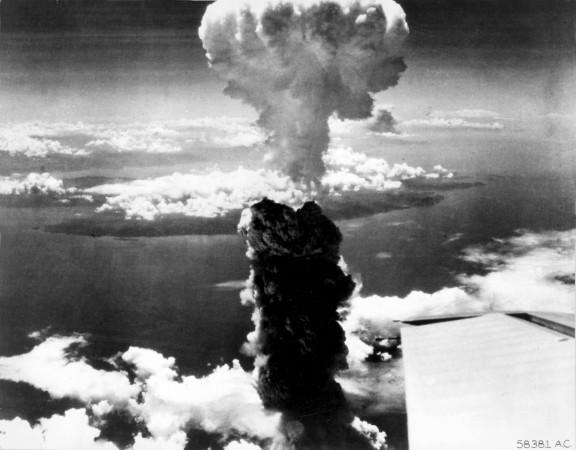
The city of Nagasaki in Japan may be a vibrant place now, with a population of 4,25,723 as of March 1, 2017, and several events such as the Shimbara Water Festival and the Spiny Lobster Festival to look forward to. But the city witnessed a nuclear attack on August 9, 1945, at 11.02 am local time that left Nagasaki paralysed for years to come.
Thursday, August 9, 2018, marks the 73rd anniversary of the day when the United States dropped an atom bomb on Nagasaki that resulted in Japan's unconditional surrender. At a time when the nation was already reeling under the Hiroshima attack, which killed about 1,00,000 people, the Nagasaki bombing took about 80,000 lives.
The Bombing of Nagasaki
During World War II, the United States is said to have planned to drop the bomb, nicknamed "Fat Man" on August 11, but the date was advanced to August 9 due to bad weather expected on the later date. As per the plan, a B-29 bomber called the "Bock's Car" took off from the Tinian Island at 1.56 am and dropped the bomb on Nagasaki at 11.02 am, 1,650 feet above the city.
While the bomb was much more powerful than the "Little Boy" dropped on Hiroshima, the hills surrounding Nagasaki contained the damage. The bomb killed many immediately, and thousands of others died days later due to injuries. The radius of the destruction was estimated at about 1.6 kilometres and several fires were reported from nearby areas.
Rise in Cancer cases
While several people died due to the direct effect of the bomb, thousands of others struggled with heat and acute radiation syndrome even months after the attack. Scores are also said to have died of radiation poisoning commonly called the "Atomic bomb disease."

It has also been said that since the bombing in Hiroshima and Nagasaki, Japan saw a rise in the number of cancer cases. Radiation-induced cancers do not show immediate effects and mostly emerge in the later years.
The Radiation Effects Research Foundation has been carrying out studies on radiation-induced cancers and has said that about 46 percent of the cancer cases reported between 1950 and 2000 were most likely due to radiation from the atomic bombs.
Birth defects and development issues
Several studies have also hinted that there were a higher number of birth defects noticed among those born after the Hiroshima and Nagasaki bombings.
Some of the rubbles of the Nagasaki bombings can still be seen in the area, but the city has been redeveloped over the years and also features memorials. While Nagasaki may be a thriving centre now, at its heart it is still a port city with a well-functioning shipbuilding industry. And after everything that Nagasaki has witnessed, its strong sense of resilience is something that shines through.










